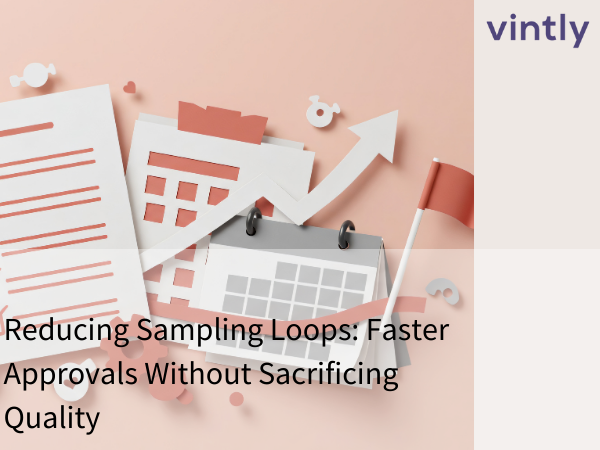Ensuring quality remains a top priority in the evolving garment production sector. Suppliers and brands are increasingly relying on rigorous inspection processes to ensure that products meet the desired standards. Among these, inline and final inspections stand out as critical stages in the quality assurance journey. Understanding the nuances, applications, and strategic use of these inspections can significantly impact the efficiency and quality outcome of garment production.
Inline Inspection: A Proactive Approach to Quality
Inline inspection, also known as during production inspection (DUPRO), is conducted at various stages throughout the manufacturing process. This method allows for immediate identification and rectification of defects or non-compliances early in the production cycle. Typically, inline inspections are carried out when 10-60% of the production is complete, providing a snapshot of the production status and workmanship quality.
Key Benefits of Inline Inspection:
- Early Detection: Identifies issues at initial stages, preventing the compounding of errors.
- Cost Efficiency: Reduces rework costs by addressing problems before the entire batch is produced.
- Process Optimization: Offers insights into production processes, allowing for real-time adjustments and improvements.
Inline Inspection Criteria: A Focus on Process and Progress
During the inline inspection phase, quality controllers primarily focus on the manufacturing process, ensuring that production aligns with the predefined specifications. Key criteria include:
- Material Quality: Verification of the fabric and other materials against the specifications for texture, color, and durability.
- Workmanship: Examination of the stitching, seams, and construction techniques to ensure they adhere to the design specifications.
- Size and Fit: Measurements of various parts of the garment to confirm adherence to the size chart and fit guidelines.
- Production Consistency: Assessment of consistency across multiple samples to identify any deviations in color, size, or quality.
- Production Timelines: Evaluation of the production schedule to ensure timelines are being met, mitigating any potential delays.
Final Inspection: The Last Line of Defense
Final inspection, or pre-shipment inspection, is the quality control phase where products are evaluated upon completion but before they are shipped. This comprehensive assessment covers various aspects, including design, specifications, functionality, and packaging, ensuring that the finished product aligns with the buyer's standards and expectations.
Key Benefits of Final Inspection:
- Quality Assurance: Confirms that the bulk production meets the agreed-upon standards.
- Compliance Verification: Ensures products comply with relevant safety and regulatory standards.
- Buyer Confidence: Provides assurance to buyers and stakeholders about product quality.
Final Inspection Criteria: Ensuring Perfection Before Shipment
The final inspection is the definitive quality control stage where every aspect of the finished product is scrutinized:
- Visual Appearance: Comprehensive check for visual defects such as stains, fabric inconsistencies, or color variations.
- Final Measurements: Confirming that the finished garments match the size specifications and tolerances outlined by the client.
- Functionality: Testing zippers, buttons, snaps, and other functional elements to ensure they operate correctly.
- Labeling and Packaging: Verification that labels, tags, and packaging meet legal requirements and client specifications.
- Overall Quality: Ensuring the garment meets the overall quality standards in terms of appearance, feel, and function.
Deciding Between Inline and Final Inspections
The choice between inline and final inspections is not mutually exclusive. In fact, employing both strategies can provide a robust quality assurance framework. Inline inspections allow for real-time corrections, while final inspections serve as a comprehensive quality checkpoint before the product reaches the consumer. This dual approach not only identifies and rectifies issues at the earliest possible stage but also ensures that the final product meets or exceeds the expectations set forth by brands and consumers alike.
When to Employ Both:
- Complex Production Processes: For garments with intricate designs or special requirements, combining both inspections can mitigate risks.
- High-Quality Standards: Brands with zero-tolerance quality policies may prefer the thoroughness of employing both inspections.
- New Supplier Relationships: When working with a new supplier, conducting both inspections can establish quality benchmarks and expectations.
The strategic use of inline and final inspections in garment manufacturing plays a crucial role in quality assurance. By understanding the strengths and applications of each, suppliers and brands can create a tailored inspection plan that aligns with their quality objectives, production timelines, and risk management strategies. In the dynamic world of garment supply, these inspections are not just about identifying defects but are pivotal in building trust, ensuring compliance, and fostering long-term partnerships.
FAQ
Q: Can inline inspections replace final inspections?
A: While inline inspections are valuable for early detection of issues, they cannot entirely replace final inspections. Final inspections provide a comprehensive review of the entire batch before shipment, serving as a crucial quality checkpoint.
Q: How often should inline inspections be conducted?
A: The frequency of inline inspections can vary based on the production volume, complexity of the garment, and historical performance of the supplier. Typically, they are conducted at multiple stages during production.
Q: What happens if a defect is found during final inspection?
A: If defects are identified during final inspection, the supplier must correct them before shipment. This may involve reworking defective products or, in some cases, producing new ones, depending on the agreement between the supplier and the buyer.
Q: Are there any industries where inline inspections are more critical than in others?
A: Inline inspections are particularly crucial in industries with complex production processes, high-quality standards, and where safety compliance is non-negotiable, such as in the baby and children's garment sectors.
.png)


